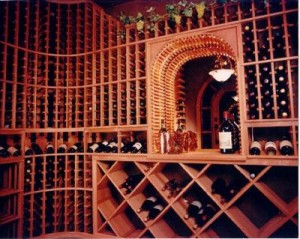Journey: Vineyard to Residential Wine Cellar & Wine Storage
Contents
Wine has been one of the most famous alcoholic beverages for hundreds of years, its popularity going strong throughout the ages. Almost everyone has heard of wine, but less know how it’s made, or that it can be created from fruits other than grapes, as well as plants and nuts.
The wine-making process is pretty simple, depending on its source. Wine-making companies like to add their own spices and ingredients to give their brand a distinct flavor. It’s common for wines to be infused with a variety of things, including flowers, spices, juices, woods and so on.
Some wines are even made from those things, for example, dandelion wine, made from the petals of dandelion flowers. What distinguishes wine from other alcoholic drinks is mainly the process by which it is made, rather than the fruit, plant or nut it is made of.
Making Wine For Your Home Wine Cellar
- The best grapes are harvested and taken to the winery.
- Once inside the winery, the grapes are prepared for their first, or, primary fermentation. It’s during this time that the grapes’ skins and juice are separated. The grape is pressed for juice and the skins added or discarded, depending on the type of wine being made. As a general rule, red wine is made from red grapes and white wine from white grapes, though occasionally white wine is made from skinless red grapes. Rose wine, on the other hand, is made from grape juice that is allowed to keep contact with the skins long enough to take on a pinkish color.
- Next yeast is added to the juice and/or skins, and the primary fermentation process begins. The process lasts a couple of weeks, during which time the yeast turns a good portion of the sugar in the wine to alcohol. The amount converted depends on the wine being made. Typically reds have a higher alcohol content, while whites remain sweeter.
- After the primary fermentation process the free run wine is pumped into tanks and the skins are pressed to extract any leftover juice. The pressed wine is then blended with the free run wine, though the amount blended depends on the person or company making it -yet another distinguishing variable. The resulting wine is kept warm as the rest of the sugars are converted into alcohol and carbon dioxide.
- Secondary fermentation occurs next, with the malic acid being converted into lactic acid. Also, red wines in particular are usually put into oak barrels. This imparts a musty, woody smell to the wine that gives oaked wines such a distinct flavor.
If you’re new to buying and storing wine, you’ll want a wine cellar of your own! You can hire wine cellar builders to come up with a custom wine cellar just for you. If you want a wine cellar right in your home, you’ll want to look into residential wine cellars.
Residential wine cellars can go just about anywhere in the home, but some well-liked places to put them include the basement, kitchen or a closet and even the garage. If you plan on storing a lot of wine, you could dedicate an entire room to a wine cellar. It depends on your personal needs and taste!
Once you’ve picked a location, find some wine cellar builders. If you know what you want, tell them and they will do their best to replicate it, as well as add some experienced ideas of their own.
Finally, when the wine cellar is built, you can fill it with all of your wines. Just be sure to store them properly, keeping them shaded from light and in a cool, humid environment. That way they will be ready to go when you want to drink them. Storing them properly and knowing a little bit about how they were made can help you appreciate their body and flavor all the more!






